News Archive
Filter By
- Abyssinian ground hornbill
- Addax
- Aldabra tortoise
- Allen's swamp monkey
- Alpaca
- American alligator
- American avocet
- American bison
- American flamingo
- American wigeon
- Andean bear
- Aquatic caecilian
- Arapaima
- Asian elephant
- Asian small-clawed otter
- Asian water dragon
- Australian snake-necked turtle
- Bald eagle
- Baltimore oriole
- Barred owl
- Bearded emperor tamarin
- Beaver
- Bennett's wallaby
- Binturong
- Black-and-white ruffed lemur
- Black-crowned night heron
- Black-footed ferret
- Black-tailed prairie dog
- Black-throated blue warbler
- Blue-billed curassow
- Blue crane
- Bobcat
- Brown pelican
- Bufflehead
- California sea lion
- Canvasback
- Cedar waxwing
- Channel catfish
- Cheetah
- Chicken
- Chinese alligator
- Chinese three-striped box turtle
- Clouded leopard
- Collared brown lemur
- Common raven
- Common yellowthroat
- Corals and sea anemones (anthozoa)
- Cow
- Crocodile monitor
- Cuban crocodile
- Dama gazelle
- Degu
- Dunlin
- Eastern corn snake
- Eastern indigo snake
- Eastern newt
- Eastern red-backed salamander
- Eastern screech-owl
- Eld's deer
- Electric eel
- Emperor newt
- Fennec fox
- Fishing cat
- Gaboon viper
- Geoffroy's marmoset
- Gharial
- Giant leaf-tailed gecko
- Giant panda
- Goat
- Golden-headed lion tamarin
- Golden lion tamarin
- Gray seal
- Gray wolf
- Green tree python
- Grevy's zebra
- Guam kingfisher (sihek)
- Guam rail (ko’ko’)
- Guinea pig
- Harbor seal
- Hartmann's mountain zebra
- Hawk-headed parrot
- Hellbender
- Home's hinge-back tortoise
- Hooded crane
- Iranian fat-tailed gecko
- Japanese giant salamander
- King vulture
- Komodo dragon
- Kori bustard
- Kunekune pig
- Land hermit crab
- Larger Malay mouse-deer
- Lemur leaf frog
- Lesser hedgehog tenrec
- Lesser kudu
- Lion
- Loggerhead shrike
- Long-tailed chinchilla
- Long-tailed salamander
- Maned wolf
- Meerkat
- Miniature donkey
- Naked mole-rat
- North American porcupine
- North American river otter
- Northern Luzon giant cloud rat
- Northern pine snake
- Northern pintail
- Northern red salamander
- Northern snakehead fish
- Northern tree shrew
- North Island brown kiwi
- Norway rat
- Orangutan
- Orchard oriole
- Ossabaw Island hog
- Ostrich
- Ovenbird
- Pallas's cat
- Panamanian golden frog
- Patagonian mara
- Persian onager
- Philippine crocodile
- Prehensile-tailed porcupine
- Prevost's squirrel
- Przewalski's horse
- Pygmy slow loris
- Red-crowned crane
- Red-fronted lemur
- Red-rumped agouti
- Red-winged blackbird
- Red knot
- Red panda
- Red River hog
- Red ruffed lemur
- Red wolf
- Ring-tailed lemur
- Ruddy duck
- Schmidt's red-tailed monkey
- Scimitar-horned oryx
- Screaming hairy armadillo
- Semipalmated plover
- Semipalmated sandpiper
- Siamang
- Sitatunga
- Sloth bear
- Southern lesser galago
- Southern swamp sparrow
- Southern tamandua
- Spider tortoise
- Striped skunk
- Tanagers
- Tentacled snake
- Tiger
- Titi monkey
- Turkey
- Twig catfish
- Two-toed sloth
- Vietnamese mossy frog
- Virginia opossum
- Von der Decken's hornbill
- Western lowland gorilla
- White-cheeked gibbon
- White-faced saki
- White-naped crane
- White-nosed coati
- Whooping crane
Displaying 1276 - 1300 of 2363 articles.
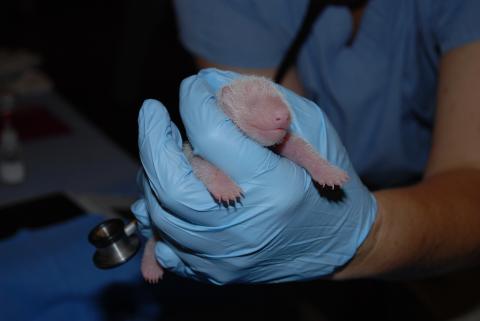
Keepers' Favorite Memories of Bao Bao
As keepers prepared to say bye-bye to Bao Bao, they shared some of their favorite memories of the playful and inquisitive cub who made history.
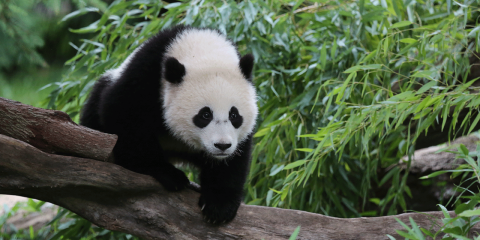
Best of Bao Bao Video
Relive some of giant panda Bao Bao's best moments in this video!
Saving the Iconic Giant Panda
At the Smithsonian’s National Zoo, giant pandas sit in their habitat munching contentedly on bamboo shoots. But, consider that giant pandas—native to China—were once on the brink of extinction. And, if not for passionate and dedicated conservationists, the world may have been devoid of pandas.
Profiles in Courage and Habitat Protection Expedition Blog
Meet Sr. Victor Romeo Cobon My name is Victor Romeo Cobón. I am 52 years old and have, since the age of 21, always dedicated myself to the production of coffee. My wife’s name is Veneda Mérida. She is 51 years old and has always helped me to better myself morally. Since I was a child, I have worked...
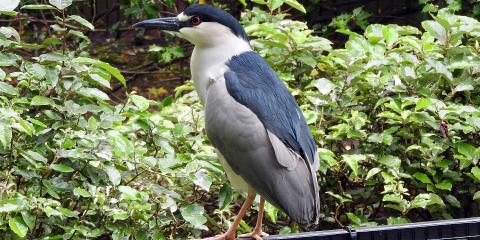
Black-crowned Night Heron Expedition Blog
February Update As part of the Smithsonian Migratory Bird Center's continuing research of the black-crowned night herons that breed at the Smithsonian's National Zoo, we deployed satellite transmitters on three adult herons in June 2016. Jackson: This bird left the Washington, D.C., area in early...
Giant Panda Bao Bao Moving to China Feb. 21
Giant panda Bao Bao will depart the Smithsonian’s National Zoo for China Feb. 21.
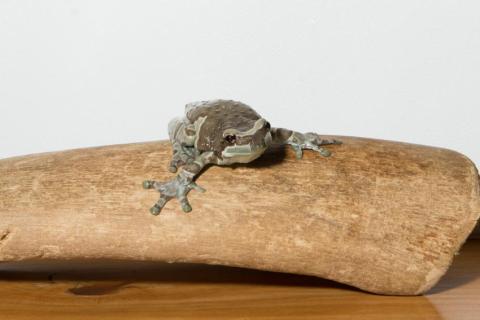
Fun Facts About Amazon Milk Frogs
Did you know: the Amazon milk frog has special toe pads on its feet to help them climb plants. They're so strong they can hold up to 14 times the animal's body weight! Check out even more fun facts about milk frogs.
Elderly Male Harbor Seal Dies at the Smithsonian’s National Zoo
The Zoo’s 31-year-old male harbor seal, Squeegee, died shortly after a diagnostic medical exam Feb. 1. American Trail keepers had been monitoring Squeegee closely for several weeks after he presented with blood in his urine.
Elderly Tufted Deer Dies at Smithsonian Conservation Biology Institute
A geriatric female tufted deer died at the Smithsonian Conservation Biology Institute (SCBI) Feb. 2. The 24-year-old tufted deer named Morticia had been treated for cataracts and mobility issues during the past several years but recently had not responded to medications.
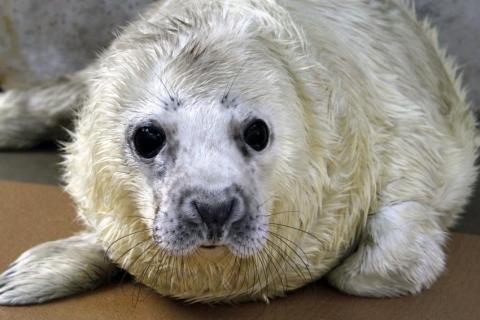
A Gray Seal ‘PUPdate’
In the early morning hours Jan. 21, American Trail keepers welcomed a fifth seal to the colony! For the past two weeks, the female pup has been bonding with mom, Kara, in an off-exhibit area and growing quickly. Get the scoop on our newest baby from assistant curator Rebecca Sturniolo in this Q&A.
New Approaches Could Improve Clouded Leopard Breeding
Why do clouded leopards seem to have a tough time reproducing outside of their natural habitat? As wild populations continue to dwindle, conservation scientists are working against the clock to find successful artificial insemination methods. Two research biologists—Adrienne Crosier and Pierre...
Sumatran Tiger Keeper Update
Love is in the air for the Zoo’s Sumatran tigers, Sparky and Damai! Their relationship, says keeper Dell Guglielmo, has been blossoming ever since the pair was introduced last September.
Bobcat Ollie in Good Health
The Smithsonian’s National Zoo’s female bobcat, Ollie—who escaped—received a medical exam this afternoon. She spent the night in the Zoo’s veterinary hospital under observation.
Photos and Video of Ollie Bobcat at Smithsonian's National Zoo Now Available
Ollie, the female bobcat at the Smithsonian’s National Zoo, was found on Zoo property this afternoon. Photos and video of her and the recovery team at the Zoo's veterinary hospital are now available on Flickr and YouTube for media use.
Female Bobcat Ollie Has Been Found on Zoo Property
The Zoo will be holding a press conference in the Bus Lot at 5 p.m. For more about the species, please read the Bobcat page of the Zoo’s website.
Press Conference for Update on Missing Bobcat Ollie
A press conference for search updates and general information related to female bobcat Ollie that escaped from the Smithsonian’s National Zoo on Monday, January 30, 2017, and has yet to be caught.
Smithsonian's National Zoo Continues Search for Bobcat
The female bobcat, Ollie, who escaped from the Smithsonian’s National Zoo yesterday has not returned to her enclosure. The Zoo received several calls from the public overnight with consistent information indicating she may be in the Zoo’s adjacent Woodley/Cleveland Park neighborhoods. Early this...
Smithsonian's National Zoo Reports A Missing Bobcat
The Smithsonian’s National Zoo reports that a female bobcat, Ollie, has escaped her enclosure. There is no imminent danger to Zoo guests or general public. Bobcats are not known to be aggressive to humans. If spotted, call 202-633-7362.
Smithsonian's National Zoo Welcomes New Seal Pup to Gray Seal Colony
The Smithsonian’s National Zoo’s American Trail team is celebrating the arrival of a female gray seal pup, born Jan. 21 at 12:43 a.m. to mother Kara.
Elderly Black-Footed Ferret Dies at Smithsonian Conservation Biology Institute
A geriatric black-footed ferret named Capone was humanely euthanized Jan. 19 at the Smithsonian Conservation Biology Institute (SCBI). He was seven years old.
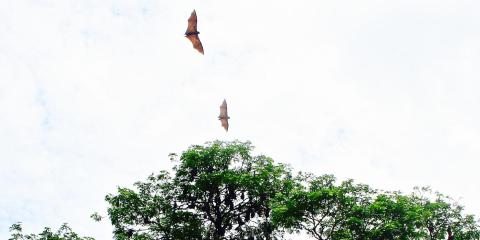
Predicting the Future of Global Health
Where and when will the next global health crisis occur? As part of USAID’s Emerging Pandemic Threat program, PREDICT, scientists in Smithsonian’s Global Health Program are on the ground in Myanmar, training local wildlife biologists on how to answer that very question.

The Secret Ingredient to Primate Development
Smithsonian Conservation Biology Institute scientist Michael Power and primate keeper Erin Stromberg discuss the science behind great ape milk in this Q & A.
The Zoo in Your Backyard
When the Shenandoah Valley and Northern Piedmont grasslands thaw from winter’s frost and transform with spring’s arrival, Smithsonian Conservation Biology Institute (SCBI) researchers and citizen scientists travel the region in pursuit of pollinators and other wildlife. As part of the Virginia...
